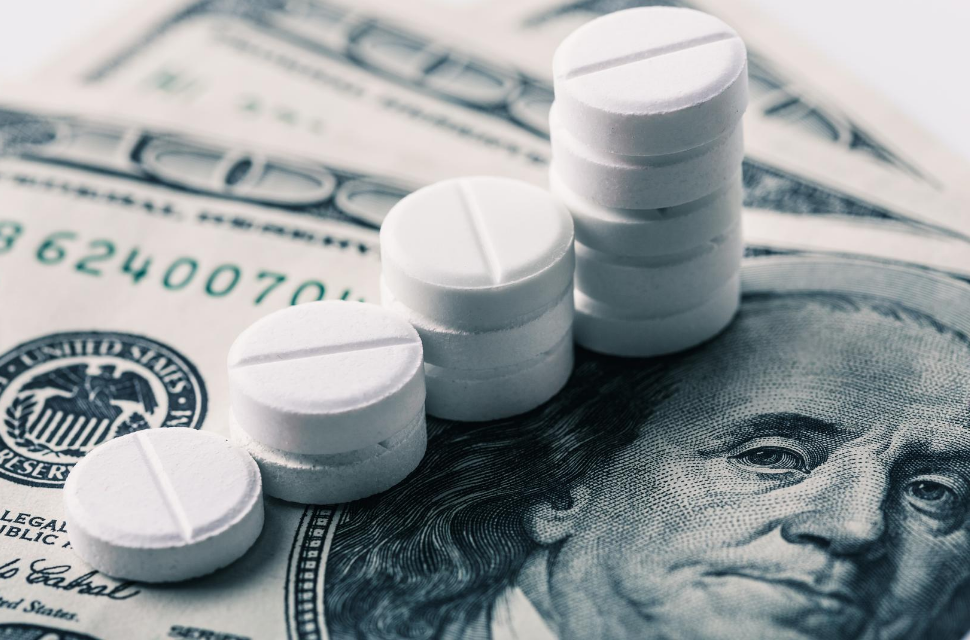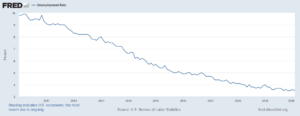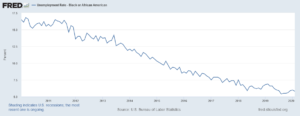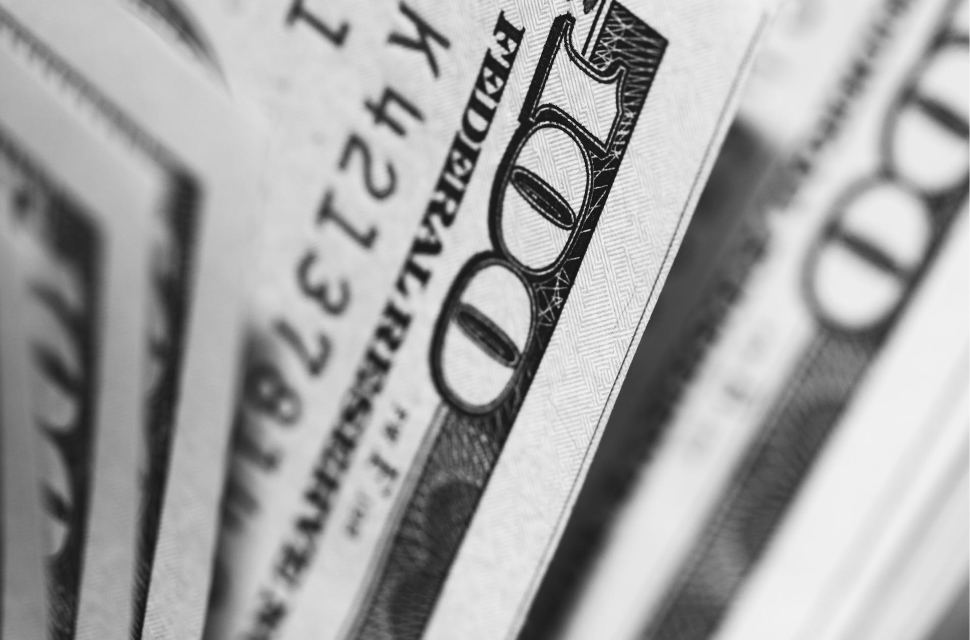
• COVID-19CoronavirusEconomic Crisis and RecoveryCrisis económica y recuperaciónInequalityLa DesigualdadIntellectual PropertyPropiedad Intelectual

Read More Leer más Join the discussion Participa en la discusión
The NYT had a piece on how the private equity company, Cerberus, is unhappy with the operation of the German bank Commerzbank. Cerberus has a major stake in the bank and, according to the piece, is unhappy that it has not moved more aggressively to cut costs, meaning firing people.
According to the article, Cerberus forced the resignation of two top executives at the bank. It then tells readers that it is unhappy with plans to replace them:
“But then, on Monday, the supervisory board nominated Mr. Schmittmann’s replacement: Mr. Vetter, former chief executive of Landesbank Baden-Württemberg, which is owned by state and local governments in southwestern Germany. Cerberus did not regard him as having the experience to fix Commerzbank.”
It is not clear how the paper determined that Cerberus’ objections were based on Mr. Vetter not “having the experience to fix Commerzbank.” Given what is reported in the rest of the piece, it seems at least as plausible that Cerberus is unhappy with Mr. Vetter’s selection because he might be reluctant to engage in large-scale layoffs. That may be what Cerberus regards as “fixing” Commerzbank, but that is not the standard definition of the word.
The NYT had a piece on how the private equity company, Cerberus, is unhappy with the operation of the German bank Commerzbank. Cerberus has a major stake in the bank and, according to the piece, is unhappy that it has not moved more aggressively to cut costs, meaning firing people.
According to the article, Cerberus forced the resignation of two top executives at the bank. It then tells readers that it is unhappy with plans to replace them:
“But then, on Monday, the supervisory board nominated Mr. Schmittmann’s replacement: Mr. Vetter, former chief executive of Landesbank Baden-Württemberg, which is owned by state and local governments in southwestern Germany. Cerberus did not regard him as having the experience to fix Commerzbank.”
It is not clear how the paper determined that Cerberus’ objections were based on Mr. Vetter not “having the experience to fix Commerzbank.” Given what is reported in the rest of the piece, it seems at least as plausible that Cerberus is unhappy with Mr. Vetter’s selection because he might be reluctant to engage in large-scale layoffs. That may be what Cerberus regards as “fixing” Commerzbank, but that is not the standard definition of the word.
Read More Leer más Join the discussion Participa en la discusión
I recently realized that Verizon is apparently randomly blocking e-mails to my account. I have no idea why this would be the case, but it is. Anyhow, I generally respond to e-mails, if they raise real questions or make serious points. If anyone has sent me a note and not gotten response, I’d suggest trying Twitter. I’m at @deanbaker13.
I recently realized that Verizon is apparently randomly blocking e-mails to my account. I have no idea why this would be the case, but it is. Anyhow, I generally respond to e-mails, if they raise real questions or make serious points. If anyone has sent me a note and not gotten response, I’d suggest trying Twitter. I’m at @deanbaker13.
Read More Leer más Join the discussion Participa en la discusión
Donald Trump and his supporters routinely boast about his great success in reducing the unemployment rate. While the unemployment rate did fall to low levels under Trump, this was just a continuation of the downward trend that had been in place under Obama since 2010.
Here’s the picture with the overall unemployment rate.

See the sharp drop for the Trump years? Yeah, I don’t either. By the way, I am being very polite in leaving out the impact of the pandemic, which would show unemployment soaring. That has not happened in most other countries because their leaders were better able to deal with the pandemic and the economy.
Here’s the picture for the Black unemployment rate since Trump apparently thinks his administration has been great for Blacks.

We see the same story here as with the overall unemployment rate, the continuation of a downward trend, albeit at a slower pace, than had been going on for years. Trump can take credit for not crashing the economy, until the pandemic, but that really is not all that much to boast about.
Donald Trump and his supporters routinely boast about his great success in reducing the unemployment rate. While the unemployment rate did fall to low levels under Trump, this was just a continuation of the downward trend that had been in place under Obama since 2010.
Here’s the picture with the overall unemployment rate.

See the sharp drop for the Trump years? Yeah, I don’t either. By the way, I am being very polite in leaving out the impact of the pandemic, which would show unemployment soaring. That has not happened in most other countries because their leaders were better able to deal with the pandemic and the economy.
Here’s the picture for the Black unemployment rate since Trump apparently thinks his administration has been great for Blacks.

We see the same story here as with the overall unemployment rate, the continuation of a downward trend, albeit at a slower pace, than had been going on for years. Trump can take credit for not crashing the economy, until the pandemic, but that really is not all that much to boast about.
Read More Leer más Join the discussion Participa en la discusión
• COVID-19CoronavirusEconomic Crisis and RecoveryCrisis económica y recuperación

Read More Leer más Join the discussion Participa en la discusión
• COVID-19CoronavirusEconomic Crisis and RecoveryCrisis económica y recuperación

Read More Leer más Join the discussion Participa en la discusión
Donald Trump has repeatedly complained about the crime in major U.S. cities. In fact, he just now decided that it would be clever to send U.S. law enforcement officers to major cities in swing states (Milwaukee, Detroit, and Cleveland), ostensibly because of the high crime there.
While he has been obsessed with talking about crime in cities with large minority populations, Trump has apparently not been paying much attention to the number of people dying from the pandemic (1,485 yesterday). In fact, far more people have died from the coronavirus than from homicides.
As of July 29th, 153,840 people had died from the coronavirus. By contrast, in 2018, the last year for which I could find full data, 16,214 died by homicide. Here’s the picture.
Source: Statista.com and Worldometersinfo.com.
Donald Trump has repeatedly complained about the crime in major U.S. cities. In fact, he just now decided that it would be clever to send U.S. law enforcement officers to major cities in swing states (Milwaukee, Detroit, and Cleveland), ostensibly because of the high crime there.
While he has been obsessed with talking about crime in cities with large minority populations, Trump has apparently not been paying much attention to the number of people dying from the pandemic (1,485 yesterday). In fact, far more people have died from the coronavirus than from homicides.
As of July 29th, 153,840 people had died from the coronavirus. By contrast, in 2018, the last year for which I could find full data, 16,214 died by homicide. Here’s the picture.
Source: Statista.com and Worldometersinfo.com.
Read More Leer más Join the discussion Participa en la discusión
• COVID-19CoronavirusEconomic Crisis and RecoveryCrisis económica y recuperaciónInequalityLa DesigualdadIntellectual PropertyPropiedad Intelectual

Read More Leer más Join the discussion Participa en la discusión
The NYT had an interesting piece on how top executives and corporate board members at drug companies working on coronavirus vaccines and treatments are cashing out options and selling stock just after big announcements of contracts or progress in research. While there are no explicit allegations, the implication is that many of these sales are based on inside information.
It is widely asserted in policy circles, especially by those on the left, that corporations are being run to maximize shareholder value. I have argued that corporations are actually being run to maximize the pay of top executives and pointed to the historically low returns to shareholders in the last two decades. If insider trading is in fact a major phenomenon, it is hard to argue that companies are being run to maximize returns to shareholders, since insider trading effectively means top executives are stealing from the companies they run.
The NYT had an interesting piece on how top executives and corporate board members at drug companies working on coronavirus vaccines and treatments are cashing out options and selling stock just after big announcements of contracts or progress in research. While there are no explicit allegations, the implication is that many of these sales are based on inside information.
It is widely asserted in policy circles, especially by those on the left, that corporations are being run to maximize shareholder value. I have argued that corporations are actually being run to maximize the pay of top executives and pointed to the historically low returns to shareholders in the last two decades. If insider trading is in fact a major phenomenon, it is hard to argue that companies are being run to maximize returns to shareholders, since insider trading effectively means top executives are stealing from the companies they run.
Read More Leer más Join the discussion Participa en la discusión
I just finished reading Carter’s book and I will agree with the general assessment. It is an outstanding book that brings together much useful material on the life and influence of Keynes.
While I am of course familiar with Keynes’ history and the history of Keynesianism, there is much that I learned here. In particular, I am impressed with the importance he gives Joan Robinson in spreading the ideas of Keynes, especially to followers from the United States.
When I first start taking economics, I hugely appreciated Robinson’s writing. She both did very important analytic work, especially her pathbreaking analysis of imperfect competition, but was also tremendously witty in her popular writing. I will always remember her great comment on unemployment (paraphrasing): “The only thing worse than being exploited by capital is not being exploited by capital.”
Anyhow, I am happy to see her given the starring role in the spread of Keynesian thought, especially given that, as a woman, she had a huge amount to overcome in a field that was, and is, tremendously sexist.
Carter also provides a fascinating account of the friendship/rivalry between John Kenneth Galbraith and Paul Samuelson. While these luminaries spent decades together in Cambridge, I was not aware of their personal history.
If I have any quibbles with the book, it is probably with its run-through of the last fifty years and the decline of Keynes’ radical vision in economics. There are certainly some items I would give a bit more attention, such as the decline of the labor movement, but covering fifty years of U.S. history in 100 pages is a major undertaking.
There are two items that do need some correction. First, from a labor market perspective, the recession following the collapse of the 1990s stock bubble was not mild. While the economy quickly rebounded in 2002 from a recession that did not even have two consecutive quarters of negative growth (the standard definition for a recession), the economy continued to shed jobs all the way through 2002 and most of the way through 2003. It did not recover the jobs lost in the downturn until February of 2005, four full years after the pre-recession peak. At the time, this was the longest period without job growth since the Great Depression. In other words, bursting bubbles have real consequence, as John Kenneth Galbraith had warned.
The other item is considerably more important. Carter buys the often-told story that bailing out the banks in the Great Recession saved us from a Second Great Depression. No biographer of Keynes should ever say anything like this.
First and foremost, Keynes taught us how to get out of the first Great Depression. The secret is spending money. If the government had gone on a huge spending spree in 1930, in response to the initial crash, instead of waiting to go full Keynesian in response to World War II, we never would have had the first Great Depression.
If we had let the market work its magic on Citigroup, Goldman, and the rest, there is no doubt that the initial downturn would have been worse. But if we responded with a massive public investment program in clean energy, health care, child care, and other areas, we quickly would have recovered. And, we would have eliminated a massive source of economic waste in the bloated financial sector. It is also worth noting that the bloated financial sector is a major generator of inequality. It is where many of the seven, eight, and even nine-figure paychecks can be found.
We should be clear; the bailout was about saving the very rich and their institutions. We could have rescued the economy just fine without them.
This gets me to the question that Carter poses at the end as to why the radicalism at the core of Keynes’s vision withered away after he died. Carter partially endorses Joan Robinson’s answer that Keynes was too naïve in believing good ideas could triumph on their own.
While this is undoubtedly in part true, I would add a bit to this in saying that Keynes and his followers were not quite radical enough in their ideas. Specifically, they were too willing to accept the idea of a natural market, that is somehow pre-existing, but may require the intervention of the government to achieve both full employment and important public goals. This acceptance lends way too much legitimacy to the critiques posed by Hayek, Friedman, and other neo-liberal opponents of Keynesianism.
The point is that the government structures the market in very fundamental ways. It can and does structure it differently through time in ways that have an enormous impact on the distribution of income.
To take my favorite example, patent and copyrights are government-granted monopolies that redistribute an enormous amount of income upward. I put the figure in the neighborhood of $1 trillion a year, or roughly half of all corporate profits. The United States would still be a capitalist economy without these government-granted monopolies, although we would have a far more equal distribution of income. As I like to say, in the world without patent and copyright monopolies, Bill Gates would still be working for a living.[1]
To take another example, the government sets the rules of corporate governance. In the United States, we have a structure of governance that makes it extremely difficult for shareholders to rein in the pay of CEOs and other top management. This is another source of massive inequality as the ratio of CEO pay to the pay of ordinary workers has exploded from just around 20 to 1 five decades ago, to around 200 to 1 today.
Incredibly, many on the left seem to think that the soaring pay of top executives is about maximizing shareholder value, even as returns to shareholders have been relatively weak in the last two decades. Even stories about insider trading, which obviously benefits top management at the expense of the corporation, do not shake this view. Anyhow, a capitalist system that made it easier for shareholders to rein in CEO pay is still very much a capitalist system.
I could cite other ways in which we have shaped the market to redistribute income upward (this is the main theme of Rigged [it’s free]), but the point should be clear. The neo-liberals are not arguing for the market as an alternative to government intervention, they are arguing for a particular structure of the market that ensures that a grossly disproportionate share of income goes to those on top.
The left gives away a huge amount in the ideological battle when it allows neo-liberals to be champions of the market, as opposed to being recognized for the champions of policies that give money to the rich. The market has real uses, and there is an inherent appeal to much of the public for the idea of leaving things to the market, rather than government bureaucrats. By contrast, saying that we want to structure the market to give as much money to the rich as possible has much less appeal.
The neo-liberals are about the latter, and the left has given them way more legitimacy than they deserve by implying that they actually have an abstract commitment to the market as a matter of principle. Exposing this deception may not be sufficient to turn the tide and bring back Keynes’s radical vision, but the failure to expose it is serious political and economic malpractice.
[1] Carter does mention this issue briefly in reference to trade deals and the WTO but does not pursue the larger implications.
I just finished reading Carter’s book and I will agree with the general assessment. It is an outstanding book that brings together much useful material on the life and influence of Keynes.
While I am of course familiar with Keynes’ history and the history of Keynesianism, there is much that I learned here. In particular, I am impressed with the importance he gives Joan Robinson in spreading the ideas of Keynes, especially to followers from the United States.
When I first start taking economics, I hugely appreciated Robinson’s writing. She both did very important analytic work, especially her pathbreaking analysis of imperfect competition, but was also tremendously witty in her popular writing. I will always remember her great comment on unemployment (paraphrasing): “The only thing worse than being exploited by capital is not being exploited by capital.”
Anyhow, I am happy to see her given the starring role in the spread of Keynesian thought, especially given that, as a woman, she had a huge amount to overcome in a field that was, and is, tremendously sexist.
Carter also provides a fascinating account of the friendship/rivalry between John Kenneth Galbraith and Paul Samuelson. While these luminaries spent decades together in Cambridge, I was not aware of their personal history.
If I have any quibbles with the book, it is probably with its run-through of the last fifty years and the decline of Keynes’ radical vision in economics. There are certainly some items I would give a bit more attention, such as the decline of the labor movement, but covering fifty years of U.S. history in 100 pages is a major undertaking.
There are two items that do need some correction. First, from a labor market perspective, the recession following the collapse of the 1990s stock bubble was not mild. While the economy quickly rebounded in 2002 from a recession that did not even have two consecutive quarters of negative growth (the standard definition for a recession), the economy continued to shed jobs all the way through 2002 and most of the way through 2003. It did not recover the jobs lost in the downturn until February of 2005, four full years after the pre-recession peak. At the time, this was the longest period without job growth since the Great Depression. In other words, bursting bubbles have real consequence, as John Kenneth Galbraith had warned.
The other item is considerably more important. Carter buys the often-told story that bailing out the banks in the Great Recession saved us from a Second Great Depression. No biographer of Keynes should ever say anything like this.
First and foremost, Keynes taught us how to get out of the first Great Depression. The secret is spending money. If the government had gone on a huge spending spree in 1930, in response to the initial crash, instead of waiting to go full Keynesian in response to World War II, we never would have had the first Great Depression.
If we had let the market work its magic on Citigroup, Goldman, and the rest, there is no doubt that the initial downturn would have been worse. But if we responded with a massive public investment program in clean energy, health care, child care, and other areas, we quickly would have recovered. And, we would have eliminated a massive source of economic waste in the bloated financial sector. It is also worth noting that the bloated financial sector is a major generator of inequality. It is where many of the seven, eight, and even nine-figure paychecks can be found.
We should be clear; the bailout was about saving the very rich and their institutions. We could have rescued the economy just fine without them.
This gets me to the question that Carter poses at the end as to why the radicalism at the core of Keynes’s vision withered away after he died. Carter partially endorses Joan Robinson’s answer that Keynes was too naïve in believing good ideas could triumph on their own.
While this is undoubtedly in part true, I would add a bit to this in saying that Keynes and his followers were not quite radical enough in their ideas. Specifically, they were too willing to accept the idea of a natural market, that is somehow pre-existing, but may require the intervention of the government to achieve both full employment and important public goals. This acceptance lends way too much legitimacy to the critiques posed by Hayek, Friedman, and other neo-liberal opponents of Keynesianism.
The point is that the government structures the market in very fundamental ways. It can and does structure it differently through time in ways that have an enormous impact on the distribution of income.
To take my favorite example, patent and copyrights are government-granted monopolies that redistribute an enormous amount of income upward. I put the figure in the neighborhood of $1 trillion a year, or roughly half of all corporate profits. The United States would still be a capitalist economy without these government-granted monopolies, although we would have a far more equal distribution of income. As I like to say, in the world without patent and copyright monopolies, Bill Gates would still be working for a living.[1]
To take another example, the government sets the rules of corporate governance. In the United States, we have a structure of governance that makes it extremely difficult for shareholders to rein in the pay of CEOs and other top management. This is another source of massive inequality as the ratio of CEO pay to the pay of ordinary workers has exploded from just around 20 to 1 five decades ago, to around 200 to 1 today.
Incredibly, many on the left seem to think that the soaring pay of top executives is about maximizing shareholder value, even as returns to shareholders have been relatively weak in the last two decades. Even stories about insider trading, which obviously benefits top management at the expense of the corporation, do not shake this view. Anyhow, a capitalist system that made it easier for shareholders to rein in CEO pay is still very much a capitalist system.
I could cite other ways in which we have shaped the market to redistribute income upward (this is the main theme of Rigged [it’s free]), but the point should be clear. The neo-liberals are not arguing for the market as an alternative to government intervention, they are arguing for a particular structure of the market that ensures that a grossly disproportionate share of income goes to those on top.
The left gives away a huge amount in the ideological battle when it allows neo-liberals to be champions of the market, as opposed to being recognized for the champions of policies that give money to the rich. The market has real uses, and there is an inherent appeal to much of the public for the idea of leaving things to the market, rather than government bureaucrats. By contrast, saying that we want to structure the market to give as much money to the rich as possible has much less appeal.
The neo-liberals are about the latter, and the left has given them way more legitimacy than they deserve by implying that they actually have an abstract commitment to the market as a matter of principle. Exposing this deception may not be sufficient to turn the tide and bring back Keynes’s radical vision, but the failure to expose it is serious political and economic malpractice.
[1] Carter does mention this issue briefly in reference to trade deals and the WTO but does not pursue the larger implications.
Read More Leer más Join the discussion Participa en la discusión
